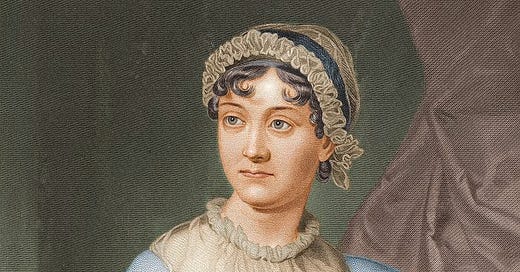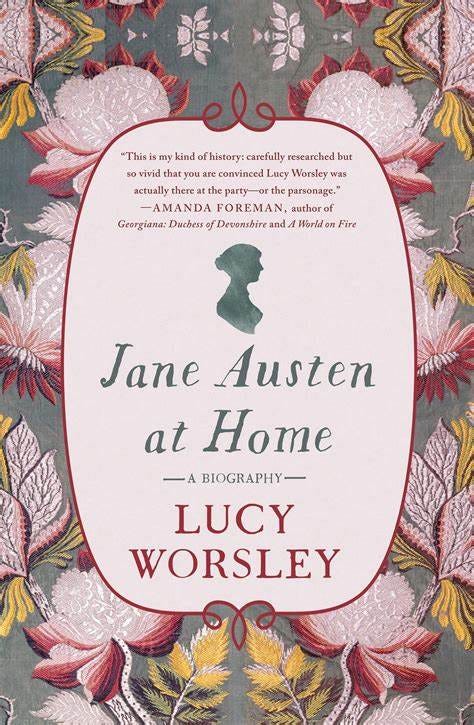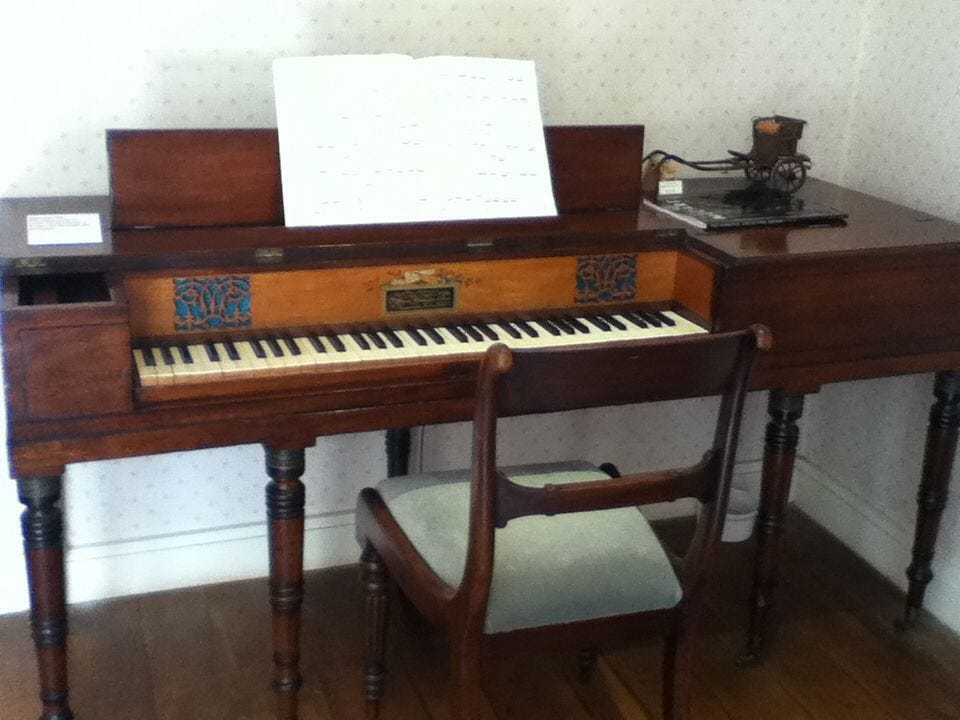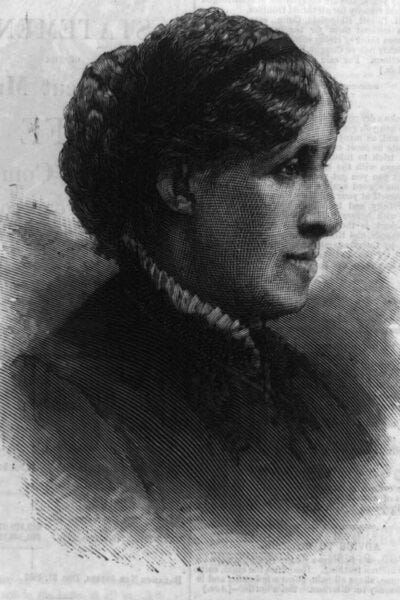Jane Austen the Time-Traveler
Jane Austen is one of few authors who earned the hearts of readers so thoroughly that she herself became a character in their stories.
Mr. Darcy. Elizabeth Bennet. These names are difficult to escape, even for readers who are not drawn to older novels. They have become immortal in the book called Pride and Prejudice.
The case is similar with Jane Austen’s other novels, which achieved similar ‘eternal life.’ The reader of English literature would need to hide under a rock in order to avoid references.
These days, you don’t even need to open the book to encounter Elizabeth and Mr. Darcy; they have become popular subjects for memes and inside jokes. Several movie adaptations have sprung up, causing fans to debate on which was most faithful to the book.
It doesn’t stop there, though! Jane Austen’s novels continue to inspire new authors; fan-fiction exists following these characters into new, unlikely situations. It’s become a popular sub-genre.
What is it about Pride and Prejudice (and Austen’s other novels) that makes it unforgettable? It’s nothing like A Court of Thorns and Roses. It has no sword-fight scenes; it’s driven by characters that, much of the time, come across as unlikeable. Yet readers, women and men alike, have been transfixed by the characters and their banter.
Again, I ask—why is it immortal? This question has lurked in the minds of readers since the book’s publication. Prior to this humble blog post, plenty of articles have been written on the topic.
If trained literary scholars have been unable to identify the secret ingredient that gives Austen’s work its power, I won’t attempt to outdo them. Instead, having properly adorned the Tearoom, I’ll play my part as hostess.
I’ll put on my historically-accurate Regency gown (I do own one! It’s dark blue!) I’ll pin my hair into a chignon. Then, I will properly introduce our guest for the month of January.
Jane’s Enviable Background
Jane Austen was born on December 16, 1775 to George and Cassandra Austen, née Leigh. She was their second daughter and seventh child. Her father was an Anglican clergyman descended from a family of woolen manufacturers.
Her mother, Mrs. Cassandra Austen, had a more glamorous family history. Her paternal grandmother, Mary Brydges, was the eldest child of Baron Chandos of Sudeley. In 1680, this baron was appointed Royal Ambassador to the Sultan’s Court in Constantinople. Jane would have heard stories of his travels as a young lady; perhaps they helped sharpen her view of the world. Perhaps some of these mishaps made it onto the pages of her books.
In spite of these family ties, Jane pokes fun at the nobility in her novels. She is known for her tongue-in-cheek commentary, as well as plotlines heavily—almost comically—focused on the ‘marriage market.’
She had been born into a society where marriage was the most significant thing a lady could aspire to, and she did not like it. Proving to be no hypocrite, Jane remained a spinster.
For research this month, I will be reading Jane Austen at Home by Lucy Worsley, who provides a compelling vision into the world of our guest-of-honor. (Worsley is also on Substack—go follow her!)
Regarding Jane’s romantic life, Worsley writes:
‘Far from lacking romance, as people often think, in her life she turned at least one suitor for absolute certain, and in her story we’ll encounter no fewer than five potential life-partners. I believe that Jane deliberately kept herself free of all that because she believed that marriage and property and a substantial home could be a prison.’
(emphasis mine)
Loyal Sisters & Scorched Letters
Jane’s older sister, Cassandra, was her closest confidante. When Jane became ill in 1817 and sensed that her life might end, she asked Cassandra to burn her letters.
Following the author’s death, Cassandra remained true to her sister’s wishes. She tossed her correspondence from Jane into the hearth (to the great frustration of Janeites and literary scholars today).
Enough letters remain to provide some answers about Jane’s life. However, to think that there could have been more to pore over! It’s a devastating notion for the fanatic.
Burning letters was a common practice at the time. It was done to protect the reputation of the deceased. Jane, who was by then well-known, had more reason than most to protect her reputation.
All of this is well and good, but we curious readers cannot deny that what we don’t know about her frustrates us.
Interestingly, Cassandra Austen also chose to remain unmarried, preferring the status of spinster to that of marriage and becoming a husband’s legal property. I bet you didn’t know that, though both sisters elected not to marry, Austen descendants exist. Jane’s brothers married and had children.
One of Jane’s descendants has a blog on Substack, which you can visit here. She recently posted a fascinating article about one of Jane Austen’s favorite holiday games, snap-dragon. It’s an entertaining and fascinating read!
Jane Austen the Pianist
Jane was known to have two passions: writing and music. One of the writing-desks Austen used is on display at the Chawton House Museum; however, she also had a portable writing desk. It’s believed that she wrote most of her work on this little board.
This portable desk is normally preserved in the British Library. There’s been a recent exception: It’s been displayed in God’s House Tower in Southampton since November 2024. It will remain there until February 2025, so if you’re in Southampton and want to see it, hurry up now!
She was a talented pianist. It was a custom for the Austens to hear Jane playing melodies each morning to start the day. The piano at Chawton House is a beautiful, elegant piece; one can only wonder which songs she played when she sat on its bench.
Though Jane did not marry, she wasn’t isolated. She had friends and relatives that she visited often, and vice versa. I imagine that many of her characters were inspired by gossip she heard from aunts or cousins.
Marriage being the most important thing a lady could aspire to (something Louisa May Alcott abhorred, which leads me to believe she and Jane would’ve been good friends), there’s no doubt that it would have been discussed over tea.
‘A Library of Janes’
As mentioned earlier, I’m using Jane Austen at Home as a primary source for research. I’ve owned this book for at least three years; in that time, it’s stared forlornly from my shelf. I’ve continued to promise that I would ‘get to it one day’.
Today is that day, and it ties neatly with one of my New Year’s resolutions: Read books that I own.
I have two other books about Jane Austen that I will also consult. However, this one has been on the waiting list for the longest time; I will be reading it first. It’s also brand-new, while the others were ordered off of ThriftBooks.
It has the ghost of that new-book smell to it, and I can’t get enough of the new-book smell! That’s why I keep buying them…and forgetting them…and that’s why this year, I am making a point of reading them.
Did Jane Austen Know a Home?
Lucy Worsley has an interesting, sobering theory about why Jane’s novels were so heavily centered on homes and making visits to homes:
‘All of Jane’s leading ladies are displaced from either their physical home, or from their family. Jane shows, subtly but devastatingly, how hard it is to find a true home, a place of safety in which one can be understood and loved. [...] This has led people to assume that Jane herself was unhappy at home, flawed or damaged in some way.
But the depressing fact is that she was just one of many spinsters of her time and position in society who had to try and feel ‘at home’ in unusual, meagre or unpleasant places.
(emphasis mine)
Worsley also points out that, while Jane’s characters visit homes of varying status and grandeur, she always paints her clearest pictures when describing parsonages—because she lived, at one time, in a parsonage with her family:
‘In Mansfield Park, for example, we get a much fuller physical description of Edmund Bertram’s future home than we do of the great mansion of Mansfield Park itself. That’s because parsonages mattered to Jane. [...] Jane was most at home in parsonages like the one she knew from growing up with her parents and brothers and sister in the Hampshire countryside.’
Worsley continues with a depressing revelation: the parsonage in which the Austens lived no longer exists. Pilgrims make the journey to the spot where it stood, only to peer down on that holy ground. There is no building.
Despair not—all isn’t lost! We have Jane’s novels, and in them, we can visit her any time we like.
A Time-Traveler, Indeed
Books about Jane Austen will continue to emerge as future generations pick up Pride and Prejudice. They will fall victim to the charm of Aunt Jane—the witty, sarcastic, oddly accessible spinster. Something about her and the words she wrote retained their vibrance, their life, so she feels like an old friend.
I’ve never dived deeply into the history of Jane Austen the writer. I am eager to meet her this month. Louisa May Alcott claimed a great deal of my heart; even after her assigned month (November), I continued researching her family. There is so much to know about the Alcotts, and I’ll write more about them sometime soon.
It’s time to shift my focus to another woman who was brave enough to be strong when women were expected to be weak. I’m sure that Jane and Louisa would get along fantastically.
I’m also certain they would’ve shared interesting conversations about marriage, equality, and finding a home—because, as we know by now, Louisa May Alcott spent her childhood not having a home (due to her father refusing to work in order to pay for one).
Jane the Genre-Hopping Sleuth
Jane Austen is one of few authors who earned the hearts of readers so thoroughly that she herself became a character in their stories.
I’ve read a variety of books that include Jane—or someone very much like her—genres varying from time-travel romance to historical mystery. While other authors have made cameos in literature, none seem so well-loved and changeable.
Could we be on to something? Perhaps Jane is the only author to possess an ability to time-travel. Perhaps she’s alive in another universe, preparing to make an appearance in someone else’s memoir.
But I digress; I am a fiction writer, and my mind does go on tangents.
Jane might have asked Cassandra to burn her letters, but enough survived for a sketch to form. In this sketch, there are enough gaps left open for raving Janeites to imagine. Jane is a friend, a beloved author, a puzzle to obsess over.
She is, above all, a source of inspiration for readers of all genders and nationalities.
Take a seat and check back every Friday. It’s Jane’s turn to tell her story (at least, what survived of it). I couldn’t hope to fill in those gaps, but I can share interesting facts that I come across as I time-travel with Jane.
The book club is also reading Sense and Sensibility, so if you would like to join, leave a comment and I’ll send you the link!
Louisa May Alcott: “Little Women” Is Born
The Civil War began in 1861 and shook every person living in the country. It was the result of years of political tension, and its many battles resulted in appalling numbers of casualties.










I just loveeee Jane Austen's work and I am so excited to learn more about her this month! 😊 I have Jane Austen at Home on my TBR, but first I need to read a book I got almost a year ago which is a collection of some of Cassandra & Jane's letters. I think it will be so interesting to read! 📚
I too own a Regency gown. A day gown with a blue flower print. It is surprisingly comfortable even without proper stays underneath.
I had half a mind to write about Jane’s writing desk after seeing it (it’s so small!) but it’s not something I’ve gotten around to. Maybe for her birthday. She would have turned 250 this year!